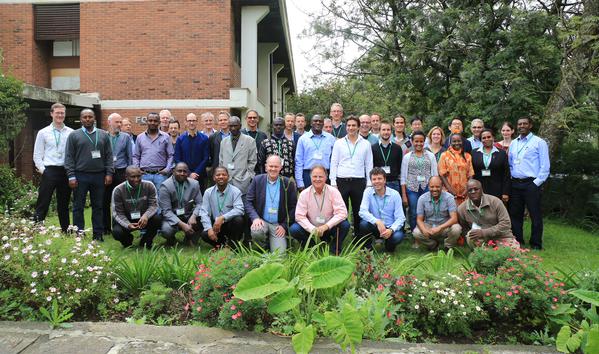 The Global Yield Gap and Water Productivity Atlas
The Global Yield Gap and Water Productivity Atlas
Current rate of yield increase for major food crops is not fast enough to meet demand on existing farmland. Given limited land suitable for crop production and population soon to exceed 9 billion, ensuring food security while protecting carbon-rich and biodiverse rainforests, wetlands, and grasslands depends on achieving highest possible yields on existing farm land. Yet for most major crop-producing countries, including data-rich regions such as the USA and Europe, there are few reliable data on yield potential (Yp) or water-limited yield potential (Yw). Hence, the target of the Global Yield Gap Atlas (GYGA) is to provide best available estimates of the exploitable yield gap (Yg-E) — difference between current average farm yields and 80% of Yp and Yw. Water resources to support rainfed and irrigated agriculture also are limited, which means efficiency in converting water to food, water productivity (WP) , is another key food security benchmark included in the Atlas.
Accurate and geospatially granular estimates of Yg and WP with global coverage are essential for:
- Estimating national and global food production capacity on existing farm land with available water supply, or need for additional land and water under different policy scenarios (e.g. biofuel or environmental policies);
- Interpreting yield trends (slow-downs, plateaus) of major food crops at regional to national scales;
- Prioritizing research and informing agricultural policies to ensure global food and water security through focus on regions with largest unexploited yield gaps and greatest potential to close them through ecological intensification and greater water productivity;
- Identifying causes of yield gaps and locations where new technologies or technology packages have greatest potential to close them.
GYGA is an international project requiring collaboration among agronomists with knowledge of production systems, soils, and climate governing crop performance in their countries. A standard protocol for assessing Yp, Yw, Yg, and WP will be applied for all crops and countries using a bottom-up approach based on actual data and robust crop simulation models. Detailed maps and associated databases will be displayed and accessible through the GYGA website.
GYGA aspires for global coverage of yield gaps for all major food crops and countries that produce them. The first phase of the project (2012 and 2013) focussed on maize, rice, wheat, sorghum and millet. The crop list has been extended with soybean, sugarcane and barley.

Participants of the fourth GYGA Workshop, Ethiopia, September 22-24, 2015.


